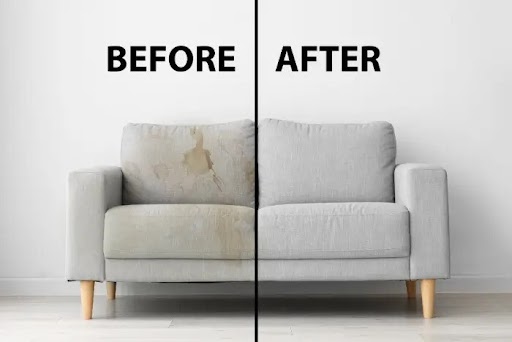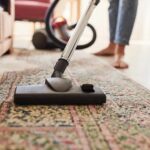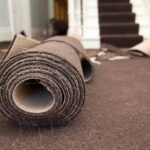You probably spent a lot of time and money purchasing the upholstery and soft furnishings in your home or business, so it pays to look after them so they can remain in a good condition for as many years into the future as possible. Here are some key tips to keep your upholstery and soft furnishings looking pristine.
1. Choose the best spot
Where you place your upholstery or soft furnishings can have a big impact on how well they fare over the years. You might be tempted to place a sofa or chair in the sunniest spot in your home, but bear in mind that constant exposure to direct UV sunlight can cause fabrics to fade, bleach or degrade over time. Fabrics may even become brittle, causing them to tear. You might be surprised to discover that this UV sunlight damage is more likely to occur during the winter rather than the summer, as the sun is lower in the sky.
You can avoid UV damage to upholstery and furnishings by fitting sun-filters and lined curtains, and adding throws to furnishings on very bright days to protect them. Rotating cushions every now and again can also ensure that both sides experience the same levels of natural wear.
Your furniture should also be placed at least 50 cm away from other direct sources of heat, such as radiators or a fire, as too much heat can cause upholstery fabrics to become warped or dried out.
If you move your furniture out of the sun, always lift it from the base, rather than dragging it or pulling the arms. Also, never sit on the arms of the chair, as this could damage the frame.
2. Vacuum regularly
It’s a good idea to get into the habit of vacuuming your upholstery and soft furnishings at least weekly to remove surface dust, particles and crumbs, which can prevent this dirt from embedding further into fabrics and causing abrasive damage.
Use the special soft brush attachment that comes with your vacuum cleaner or a clean white cloth, and pay attention to all of the corners, creases and folds in the furniture, as well as underneath cushions.
Only use gentle movements when vacuuming your upholstery and a low suction, especially if you have furnishings made from delicate materials such as velvet, as this will prevent scratching or marking fabrics.
3. Plump cushions
Plump and straighten cushions daily to maintain their fullness and shape, whilst offering you maximum comfort and support. In particular, if your soft furnishings are made from heavy materials like velvet, or without foam interiors such as feathers, regular use without plumping can make them become compressed over time and lose their original form. Large sofas also tend to lose their plumpness faster than smaller ones, so pay attention to plumping the cushions on these, too.
Additionally, turn cushions over or move them around regularly to prevent uneven wear and tear.
4. Avoid dye transfer
Be mindful that certain items of non-colourfast clothing or garments, such as blue denim jeans, can transfer their dyes to upholstery fabrics. This may be more noticeable on light fabrics or leather.
It’s a good idea to check labels on your clothes, especially if they’re new, to make sure your upholstery won’t suffer any potential dye transfer.
Bear in mind also that some heavy textiles like denim can be abrasive to some upholstery fabrics.
5. Good ventilation
The fabrics in your sofas and soft furnishings can absorb odours in a room, such as from cooking or stale smoke. To prevent your upholstery smelling unpleasant, provide good air flow and ventilation in a room by regularly opening windows.
6. Avoid contact with cosmetics
To prevent potential damage from occurring to furnishing fabrics, especially leather, don’t sit down on sofas, chairs or near cushions if you’ve used any body lotions, gels or cosmetics.
7. Don’t pull at snags
Sharp objects such as toys, belt buckles or jewellery may snag at the fabrics in your soft furnishings and upholstery. If this occurs, don’t pull at any snags as this could make a bigger hole in your furnishings. Instead, gently and carefully cut any snags with scissors.
8. Protection from pets
If you have pets, their claws may also accidentally snag furnishings. Additionally, your sofa might become a target for sharpening their claws. Therefore, keep an eye on any pets when they go near your upholstery and soft furnishings. Train them to use a scratching post and consider adding covers to sofas and chairs overnight.
Pet hairs and pet dander can also affect the appearance and condition of your upholstery and furnishings over time, so use a special brush to remove pet hairs and get your upholstery regularly cleaned.
9. Tackle spillages right away
One of the most important things you can do to look after your upholstery is to act fast if something gets spilled on it. Your first job should be to blot the spillage with absorbent paper or a clean cloth. Then, how you tackle the spillage depends on the source of it, including whether it’s a water-based spillage or an oily or greasy one. You should also take into account the fabrics and textures of your upholstery, as different materials react in different ways to various cleaning methods and techniques.
Many spills can be quickly and effectively removed using natural home remedies involving the use of baking soda or white vinegar, for example. You can also buy specialist products suitable for cleaning upholstery. Always do a test patch first.
If cushion or sofa covers have become grubby or stained, it’s not usually a good idea to wash them yourself, as this could cause them to shrink or fade.
Because you’ve probably paid a lot of money for your upholstery, it’s safer to contact a professional sofa cleaning company when spills and stains occur. Professionals will have a lot of experience removing marks from different types of fabrics, as well as other types of dirt, allergens and odours.
You might also want to consider getting anti-stain protection added to your upholstery and soft furnishings. This can help to repel any new spillages from penetrating the fabrics in your upholstery, so they are easier to remove and won’t turn into troublesome stains.
10. Regular professional cleaning
Even if your settees or chairs don’t experience spills and stains, it’s still a good idea to get your upholstery regularly cleaned by a professional upholstery cleaning company at least once per year. Experts claim that regular professional cleaning can help to remove deep-seated dirt, dust, odours, stains, allergens and bacteria that you can’t remove yourself, either with your own vacuum cleaner or any other cleaning methods. Professional cleaning could even help to extend the lifespan of your furnishings.
When you search for professional sofa cleaning near me, choose a reputable sofa cleaning business that comes with lots of positive reviews and is highly recommended, as well as accredited and insured.
If you’re looking for professional sofa cleaning in London or elsewhere in the South East, Carpet Bright UK is the award-winning name to trust with first-class credentials. Call now for a free quote.







